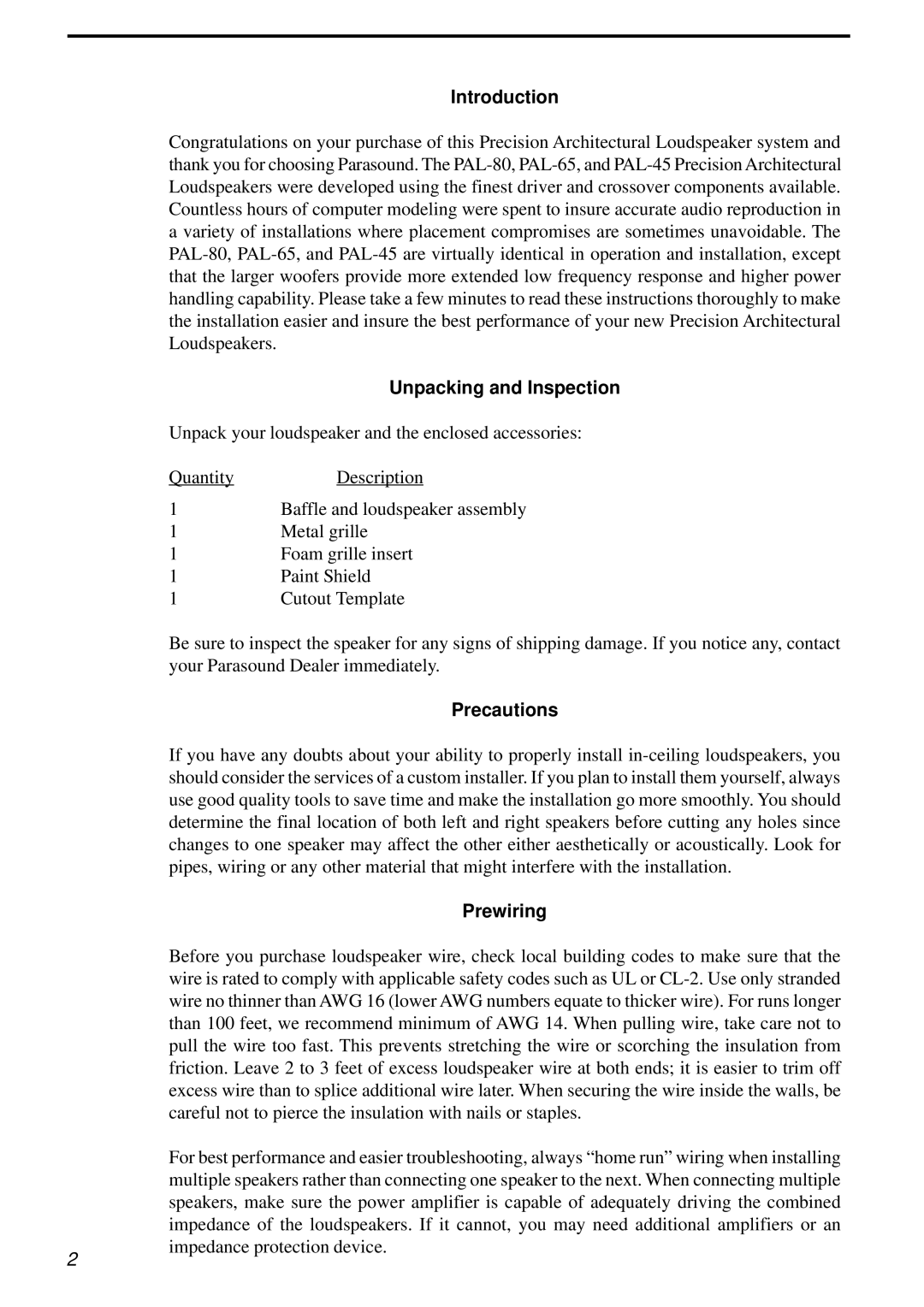PAL-45, PAL-65, PAL-80 specifications
Parasound is renowned for its high-quality audio products, and its line of amplifiers, including the PAL-65, PAL-45, and PAL-80, exemplifies this commitment to audio excellence. Each model boasts unique features and advanced technologies that cater to audiophiles and casual listeners alike, ensuring a captivating listening experience.The Parasound PAL-65 is a powerful amplifier known for its reliable performance and exceptional sound quality. With a power output of 65 watts per channel, it is versatile enough to drive a wide range of speakers. One of its standout features is its Class A/B amplification, which balances power efficiency with audio fidelity. This results in a warmer sound signature while minimizing distortion at higher volumes. The PAL-65 also incorporates a toroidal power transformer, enhancing the amplifier's efficiency and transient response, allowing for crisp audio reproduction even at demanding levels.
Moving on to the PAL-45, this model is designed with a focus on delivering pristine sound at a slightly lower power output of 45 watts per channel. Ideal for smaller rooms or less demanding setups, the PAL-45 still offers many of the same premium features found in its higher-powered siblings. Its discrete output stage ensures high current capability, which translates into a dynamic and engaging listening experience, making it a popular choice for both music and home theater applications. The PAL-45 maintains the same exceptional build quality as the rest of the PAL series, ensuring longevity and reliability.
Finally, the PAL-80 takes performance to new heights with its 80 watts per channel output, making it a powerhouse for larger rooms and more demanding speaker systems. This amplifier is engineered with advanced circuitry to minimize noise and enhance audio clarity. Its bi-directional cooling design aids in heat dissipation, ensuring efficient operation even during extended use. Furthermore, the PAL-80 features multiple input options, including balanced XLR connections, catering to various sources while maintaining audio integrity and minimizing interference.
In summary, the Parasound PAL-65, PAL-45, and PAL-80 amplifiers showcase an impressive blend of power, technology, and build quality. With features designed to enhance the listening experience, each model serves its purpose, whether for casual listening or high-performance audio setups. Parasound continues to uphold its legacy in the audio industry by delivering amplifiers that meet the diverse needs of music enthusiasts and home theater operators.
